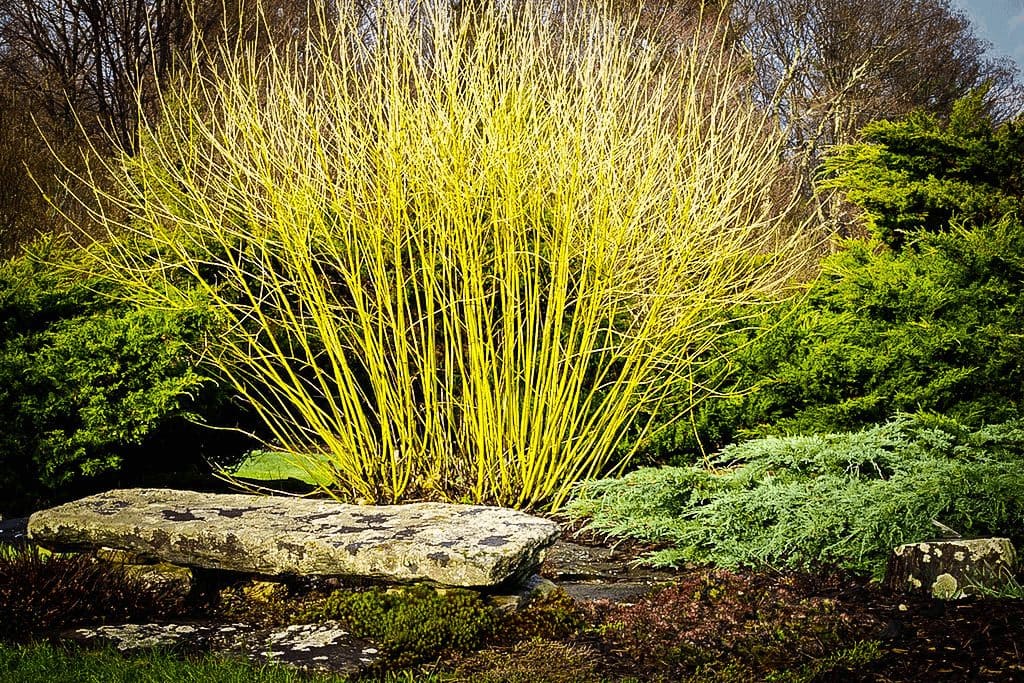Introduction
Dogwood shrubs, known for their vibrant foliage and delicate blooms, are popular choices in landscaping projects. These versatile plants not only enhance the aesthetic appeal of gardens but also provide numerous environmental benefits. Understanding their characteristics, growth requirements, and maintenance is essential for creating thriving garden spaces.
What is a Dogwood Shrub?
Dogwood shrubs belong to the genus Cornus and encompass various species renowned for their ornamental value. These deciduous plants typically feature colorful leaves, attractive flowers, and in some varieties, decorative berries. With their diverse shapes and sizes, dogwood shrubs offer options suitable for various landscaping needs.
Types of Dogwood Shrubs
Dogwood shrubs come in several varieties, each with its unique features and growth habits. Common species include Cornus florida (flowering dogwood), Cornus sericea (red twig dogwood), and Cornus racemosa (gray dogwood). Flowering dogwoods boast showy blossoms in spring, while red twig dogwoods add winter interest with their vibrant stems.
Growing Conditions
Successful cultivation of dogwood shrubs relies on providing optimal growing conditions. These plants thrive in well-draining soil with a slightly acidic pH. They prefer locations with partial shade to full sun exposure and require regular watering, especially during the establishment phase.
Planting Dogwood Shrubs
When planting dogwood shrubs, it’s crucial to prepare the soil adequately and choose an appropriate location. Begin by digging a hole twice as wide as the root ball and at the same depth. Gently loosen the roots before placing the shrub in the hole and backfilling with soil. Water thoroughly to ensure proper establishment.
Care and Maintenance
Proper care is essential for maintaining healthy dogwood shrubs year-round. Regular pruning helps shape the plants and remove dead or diseased branches. Additionally, applying a balanced fertilizer in early spring and monitoring for pests and diseases are vital steps in ensuring optimal growth.
Common Diseases and Pests
Dogwood shrubs are susceptible to various diseases and pests, including powdery mildew, anthracnose, and aphids. Timely identification and treatment are crucial for preventing widespread damage. Cultural practices such as adequate spacing and proper airflow can also help mitigate disease risks.
Dogwood Shrub Landscape Design
Incorporating dogwood shrubs into landscape designs adds visual interest and texture to outdoor spaces. These versatile plants can serve as focal points, borders, or mass plantings, depending on the desired effect. Combining different varieties and colors creates dynamic and visually appealing landscapes.
Seasonal Care Guide
Providing seasonal care ensures the continued health and vigor of dogwood shrubs throughout the year. In spring, focus on fertilization and pruning to encourage new growth and flowering. Summer care involves adequate watering and monitoring for pests, while fall is ideal for transplanting or dividing shrubs. Winter maintenance includes protecting plants from harsh weather and pruning dormant branches.
Benefits of Dogwood Shrubs
Beyond their ornamental value, dogwood shrubs offer numerous benefits to the environment and wildlife. Their dense foliage provides shelter and nesting sites for birds, while the flowers attract pollinators such as bees and butterflies. Additionally, the berries produced by some species serve as a food source for wildlife during the winter months.
Frequently Asked Questions
Q: How tall do dogwood shrubs grow? A: The height of dogwood shrubs varies depending on the species and variety. While some may reach heights of 6-10 feet, others remain more compact, staying around 3-5 feet tall.
Q: Do dogwood shrubs require pruning? A: Yes, regular pruning is beneficial for maintaining the shape and health of dogwood shrubs. Pruning should be done in late winter or early spring before new growth begins.
Q: Are dogwood shrubs deer resistant? A: While some varieties of dogwood shrubs may have some level of resistance to deer browsing, they are not entirely deer-proof. Implementing deterrents or fencing may be necessary in areas with high deer populations.
Q: How often should I water my dogwood shrubs? A: Dogwood shrubs prefer consistently moist soil, especially during the establishment period. Water deeply once or twice a week, depending on weather conditions and soil moisture levels.
Q: Can I grow dogwood shrubs in containers? A: Yes, certain dwarf varieties of dogwood shrubs can thrive in containers, provided they receive adequate sunlight, water, and nutrients. Choose a large container with drainage holes and use a well-draining potting mix.
Q: When is the best time to plant dogwood shrubs? A: The ideal time to plant dogwood shrubs is in early spring or late fall when temperatures are mild, and the soil is workable. Avoid planting during extreme heat or cold.
Conclusion
In conclusion, dogwood shrubs are valuable additions to any landscape, offering beauty, versatility, and environmental benefits. By understanding their growth requirements and implementing proper care practices, gardeners can enjoy healthy and vibrant shrubs year-round. Whether used as focal points, borders, or mass plantings, dogwood shrubs enhance outdoor spaces and provide habitat for wildlife.


